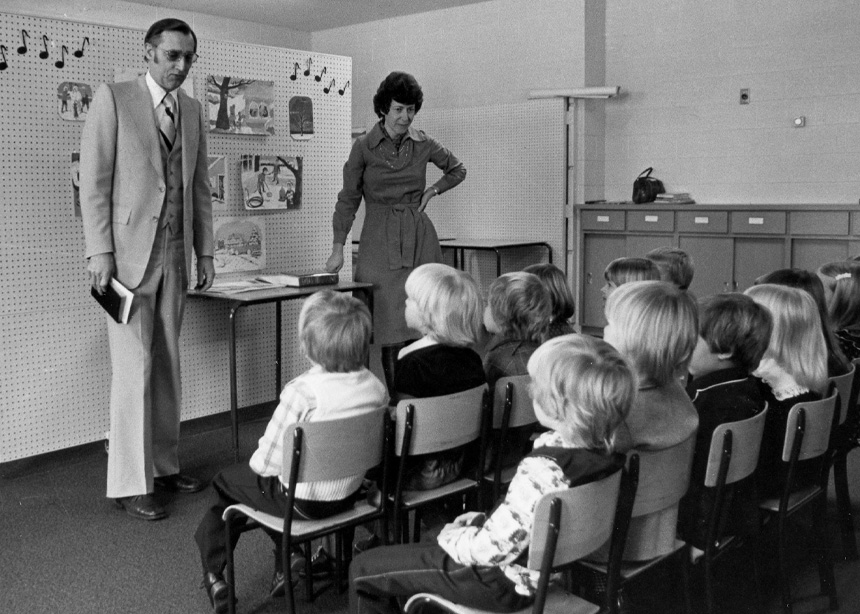They had forgotten about the kids.
It was the 1980s; two major Mennonite denominations had merged, spending five years and a large sum of money to figure out how to bring the various mission boards into the integrated denomination, when suddenly people realized that no attention had been given to where Sunday school would fit into the plan.
Arising from that realization, Dan Nighswander, who served as executive secretary of the Mennonite Church in Canada at the time, invited me to coordinate Sunday school discussions on a half-time basis for one year.
Though I had been a teacher and pastor, the task was daunting.
Some of what I learned at the time may be useful now. The aftermath of COVID’s great interruption and reduced attendance in many churches means Sunday school—or Christian education—is particularly worthy of attention.
How Sunday school started
In 1780, Robert Raikes, a newspaper publisher in England, started a school designed to bring poor children off the streets and teach them to read and write, using the Bible as the primary text. They met on Sundays and the classes were known as “Sunday school.”
By 1874, the Methodist Church had begun the Wesleyan Methodist Sunday School Union in England. When the Methodist Church migrated to the U.S. from England, it brought Sunday school along.
Soon the phenomenon spread across various denominations in both the U.S. and Canada. While Sunday school was a separate entity at first, it eventually became more of a congregational program with its own leadership structure. The focus shifted from literacy to biblical instruction or “Christian education.” The Sunday school movement was led by the laity, with the blessing and support of pastors and the church.
Eventually, adult Sunday school was also instituted, and by the mid-1900s, evangelical churches across North America commonly promoted “Sunday school for all ages.”
Sunday school also became a vehicle for evangelism and conversion. My grade 1 Sunday school teacher at St. Jacobs Mennonite Church in St. Jacobs, Ontario, regularly presented an invitation to us children to “accept Jesus” into our hearts.
Mennonite context
Largely due to Methodist influences, Mennonites in North America began to adopt Sunday school. However, the Old Order Mennonites, who split in 1889, resisted what they called “creeping Methodism” with its attendant revivalism and use of the English language. They believed that Christian education belonged in the home.
But other Mennonites—Mennonite Church and General Conference— widely adopted Sunday school as their own and published curricula for all ages. The adult study program, which was prepared by a committee of the wider church and functioned as a kind of lectionary, was commonly known as “the quarterly” when I was young. Each church could use the quarterly to write their own materials on the prescribed texts.
Many older people today remember fondly the regular articles written by Howard Charles in the Teacher’s Guide.
While Sunday school was conducted in various ways across the Mennonite Church, my experience was that of classes divided by age and separated by gender—though often women’s classes were taught by men.
In my church, the children’s Sunday school classes met in the basement, with the various adult classes in the sanctuary. Each teacher stood in an empty pew facing his class. There was a bit of a cacophony across the sanctuary as numerous teachers spoke simultaneously.
While Christian education was largely conducted by untrained laity before the formation of Mennonite Church Canada, starting in the 1970s, there was an increasing emphasis on teacher training events. I was among other pastors and trained lay teachers who led these events in the area conferences. In addition, biannual training events were held in conjunction with the binational Assembly.
In the ’80s, during the consultation process to consider where Sunday school fit in the conference reorganization, we recognized that a “school” model is not the only or best way to learn the Christian beliefs. Sunday school became known as Christian education and nurture. Officially, we eventually decided to simply call it “formation,” with the adjective “Christian” implied. It has been called that ever since, though many people still lapse into the old term “Sunday school” as a habit of the heart.
After the integrated denomination separated into Mennonite Church USA and Mennonite Church Canada, the publication of curricula and related materials in support of formation remained a common endeavour, undertaken by MennoMedia, which is jointly owned by MC USA and MC Canada.
Sunday school in the future
As the church moves into an uncertain future, we can’t forget about the kids.
Formation has unique challenges in a changing world. How will our children and youth learn the scriptures? Will congregations use the children’s curriculum produced by the Mennonite church? How will they learn what it means to be a Christian and relate in Christian community, and what it means to be people of faith in the midst of our ever-changing society?
Among adults, will the focus of faith formation increasingly be on fellowship, or will there be a substantial learning component? Will Bible study be a central part, or will it only be referenced in support of key themes or topics?
Back in 1989, we asked ourselves to dream about the future of faith formation. I hope dreamers today are dreaming dreams for the children in the church, dreams for Sunday school that go beyond cool activities for children to immerse children (and adults) in the Bible, so that we can truly be the people of the Book.









Leave a Reply
You must be logged in to post a comment.